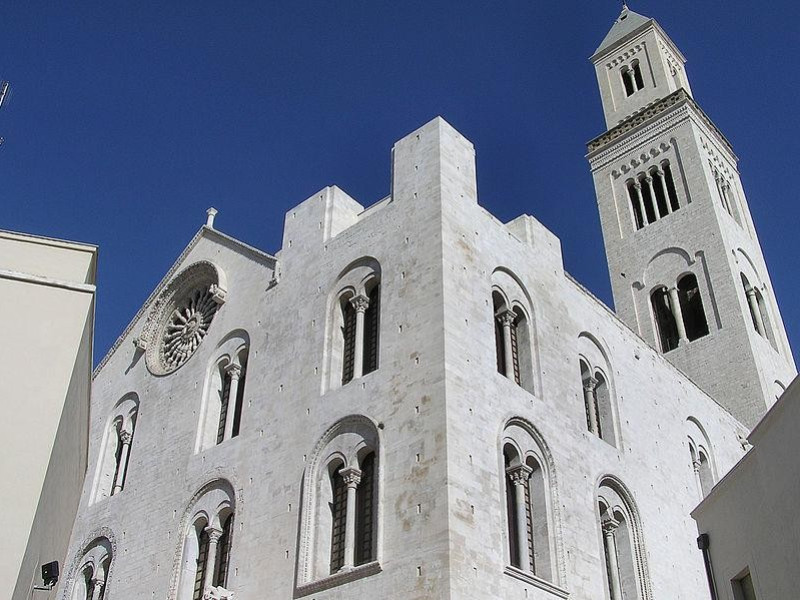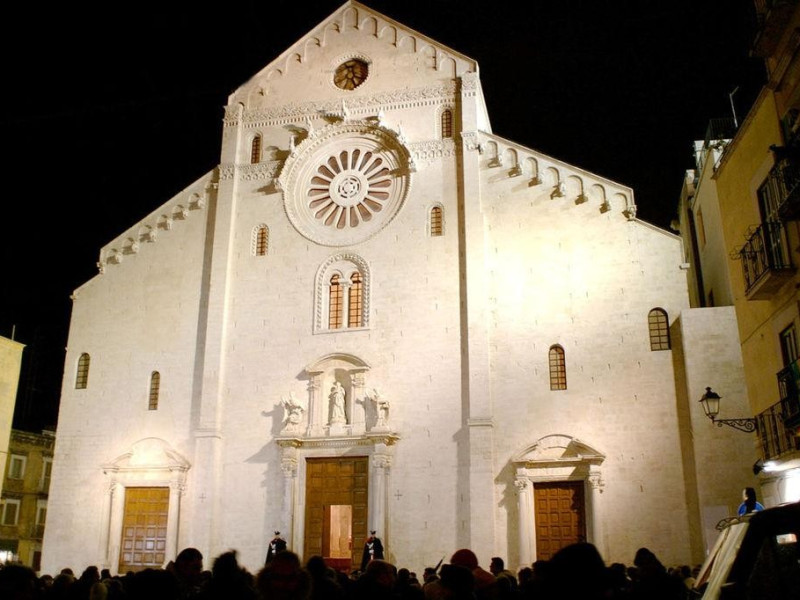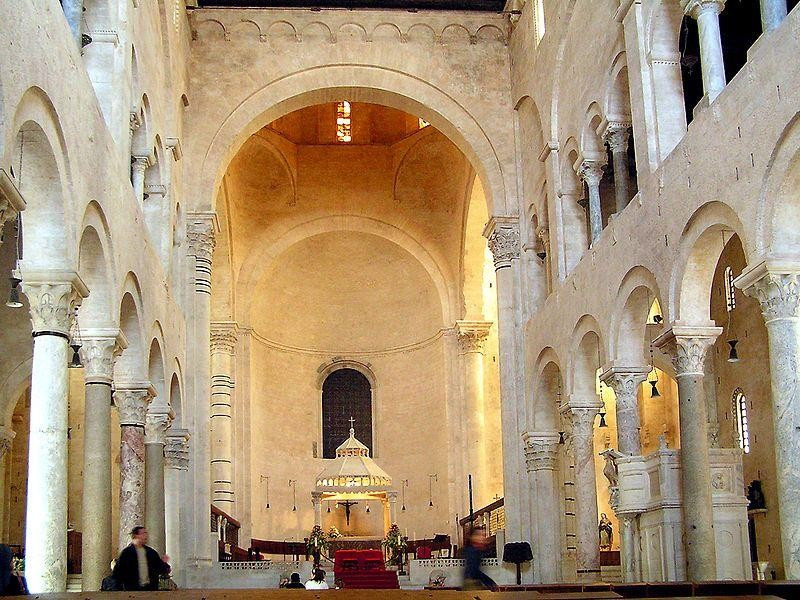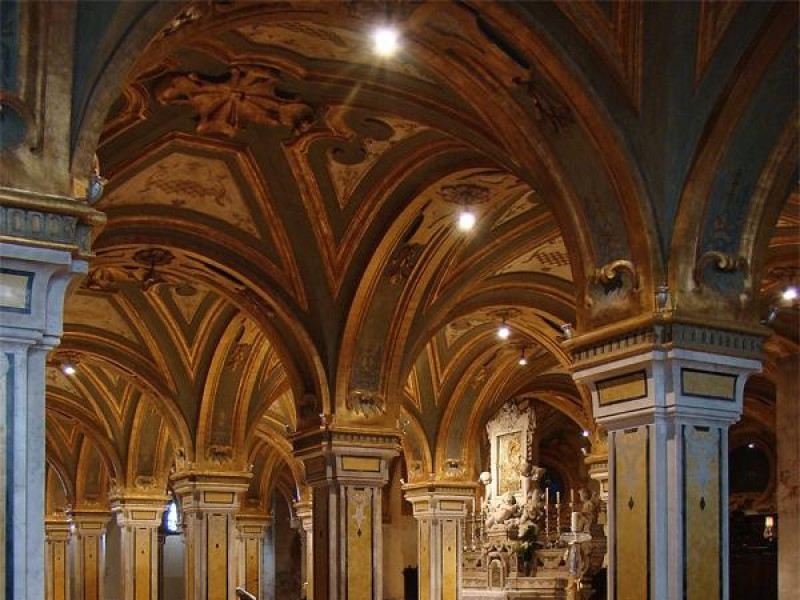Cattedrale di San Sabino (Duomo)
It was built between XII and XIII century on a more ancient place of worship, Byzantine Cathedral destroyed by William I the Bad (1156). Ancient church dates back at least to the sixth century. Under the nave are the remains dating back to a time before: a structured formed by a three-nave environment, with square pillars and vaults with blocks in a herringbone pattern, now Crypt. The reconstruction of the building was made by archbishop Rainald, in the late twelfth century. Crypt houses the relics of St. Sabino, bishop of Canosa. Cathedral is an important example of Romanesque style: simple facade is divided into three by pilasters and crowned; three portals dating back to the eleventh century, but have been reworked in the eighteenth. The top is decorated with single and double lancet window and a rose window decorated with monsters and imaginary creatures. On the sides are opened deep arches which run esafore galleries (redone); at crossing of the arms is the dome, polygonal outside with frieze; to the left, big trulla, cylindrical ancient baptistry transformed into Sacristy in the seventeenth century, and just off the bell tower with windows and a tall spire (remade with similar stones to original). The interior, stripped of all Baroque structures, appears simple and solemn, with central nave that houses the pulpit recomposed by original fragments of the eleventh and thirteenth centuries, ciborium altar and chair of Episcopal priesthood. Under the transept lies Crypt, transformed in the eighteenth century, which is also preserved Byzantine table of Odegitria Virgin, principal patroness of the city along with St. Nicholas. Pipe organ was built by Ruffatti brothers and restored in 2005 by Gustavo Zanin.




